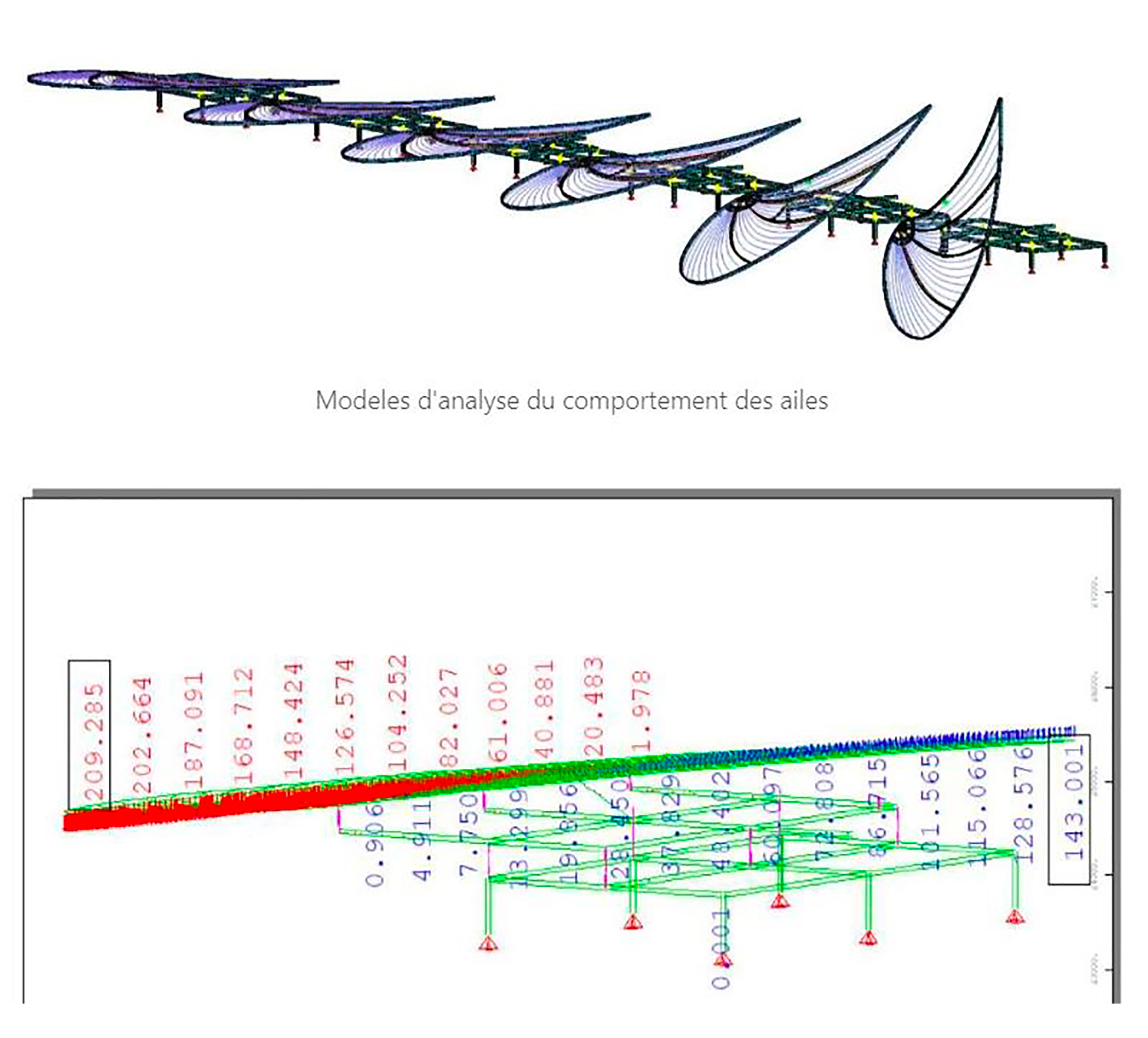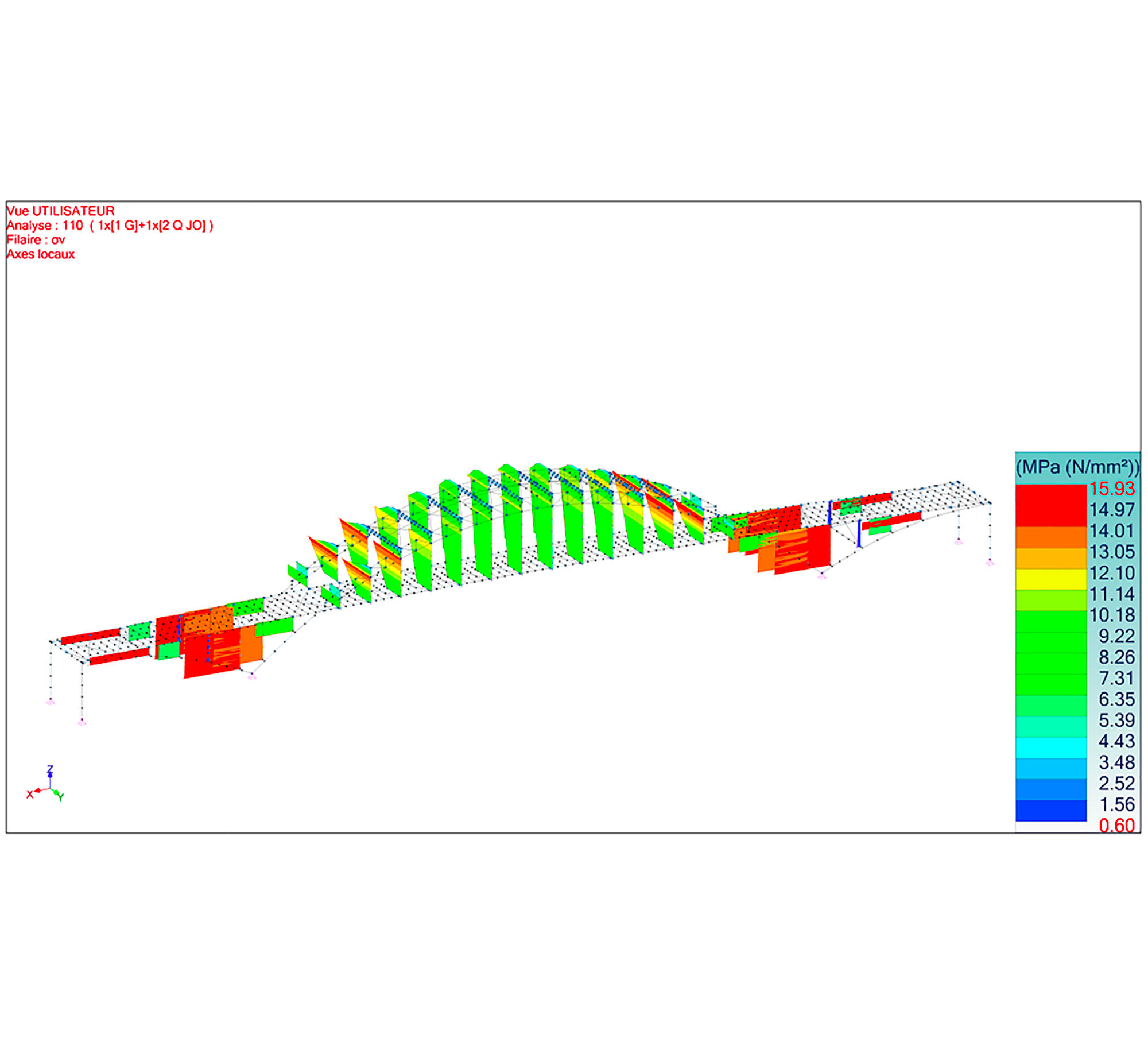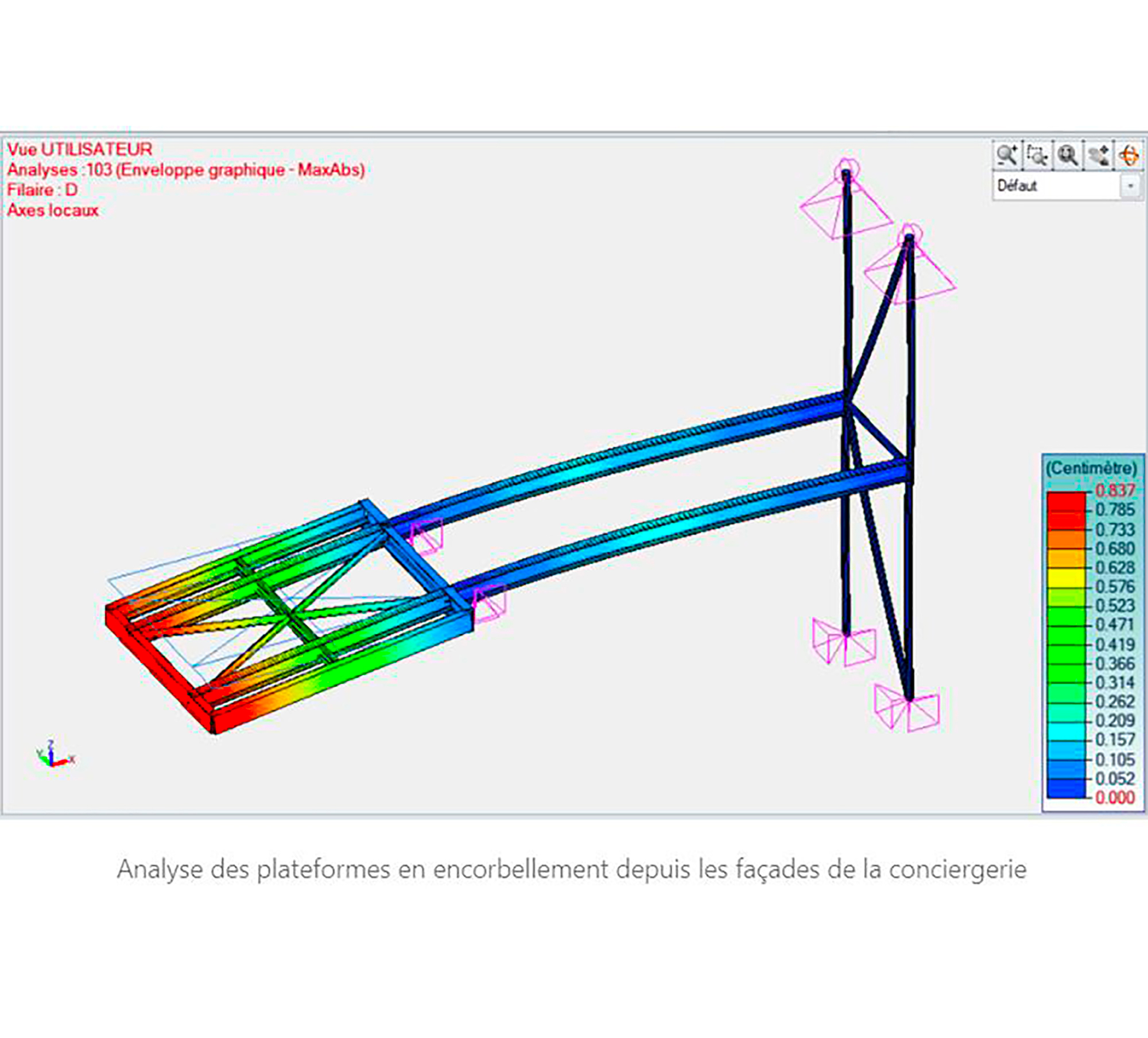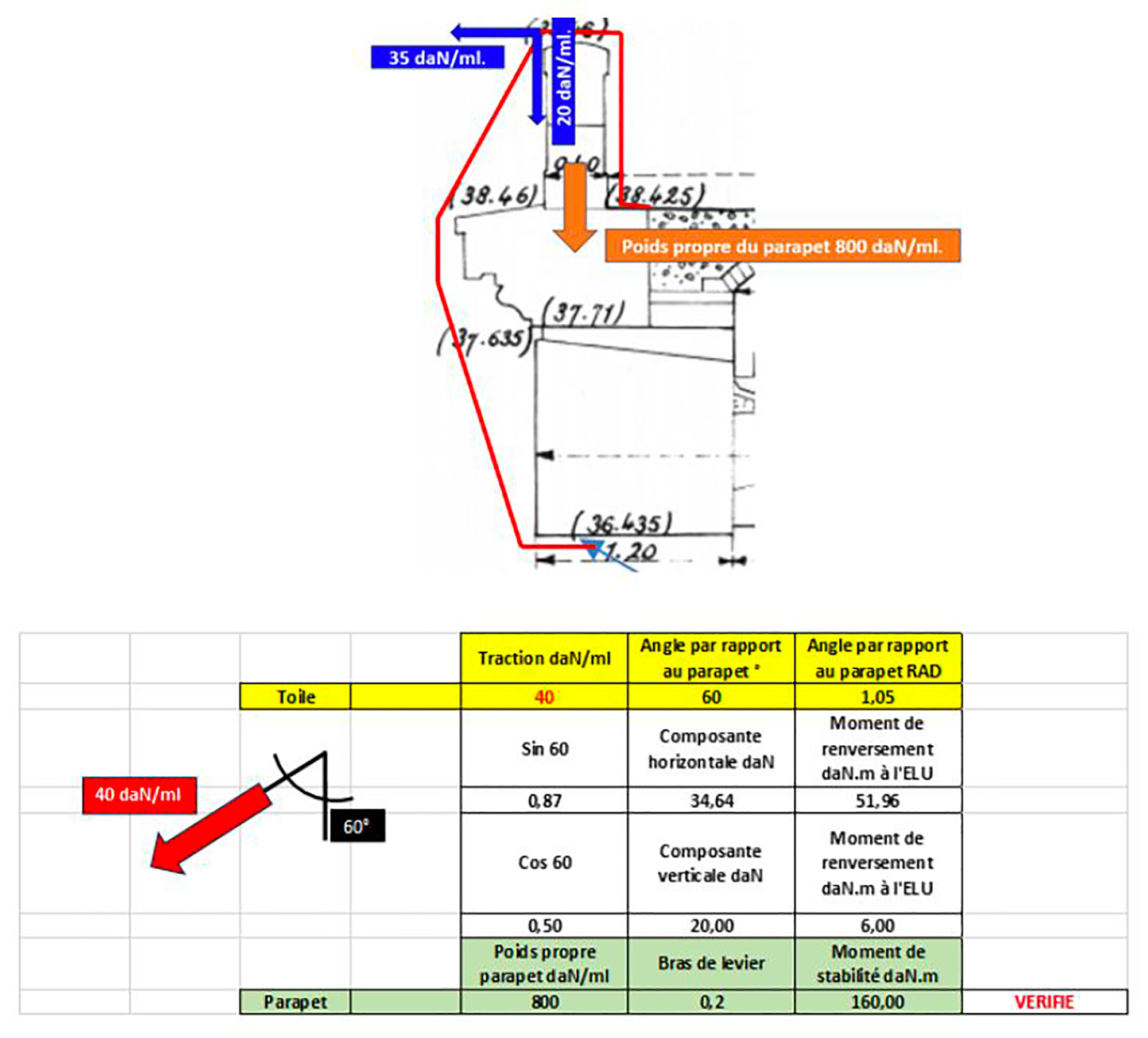The structural works behind the Olympics opening ceremony
The Opening Ceremony of the Paris 2024 Olympic Games, held on 26 July, broke attendance records: a total of 360,000 spectators gathered on the banks of the Seine, which had been specially laid out for the occasion by engineering and architecture firm C&E ingénierie. In a LinkedIn article posted on 28 July 2024, architect and engineer Jean-Marc Weill, director of C&E, looks back on the structural work behind the ceremony. AA offers a translation of this spectacular story.
The opening ceremony of the 2024 Olympic Games, a unique structural engineering experience
Jean-Marc Weill, architect and engineer
For sixteen months, C&E Ingénierie took part in the development of Thomas Jolly’s project as part of the Paname 24 team [an association of five major French event production agencies (Auditoire, Havas Events, Ubi Bene, Obo, Double 2) responsible for the executive production of the opening ceremony of the Paris 2024 Olympic Games. Ed.]. During these preparations, we faced several challenges.
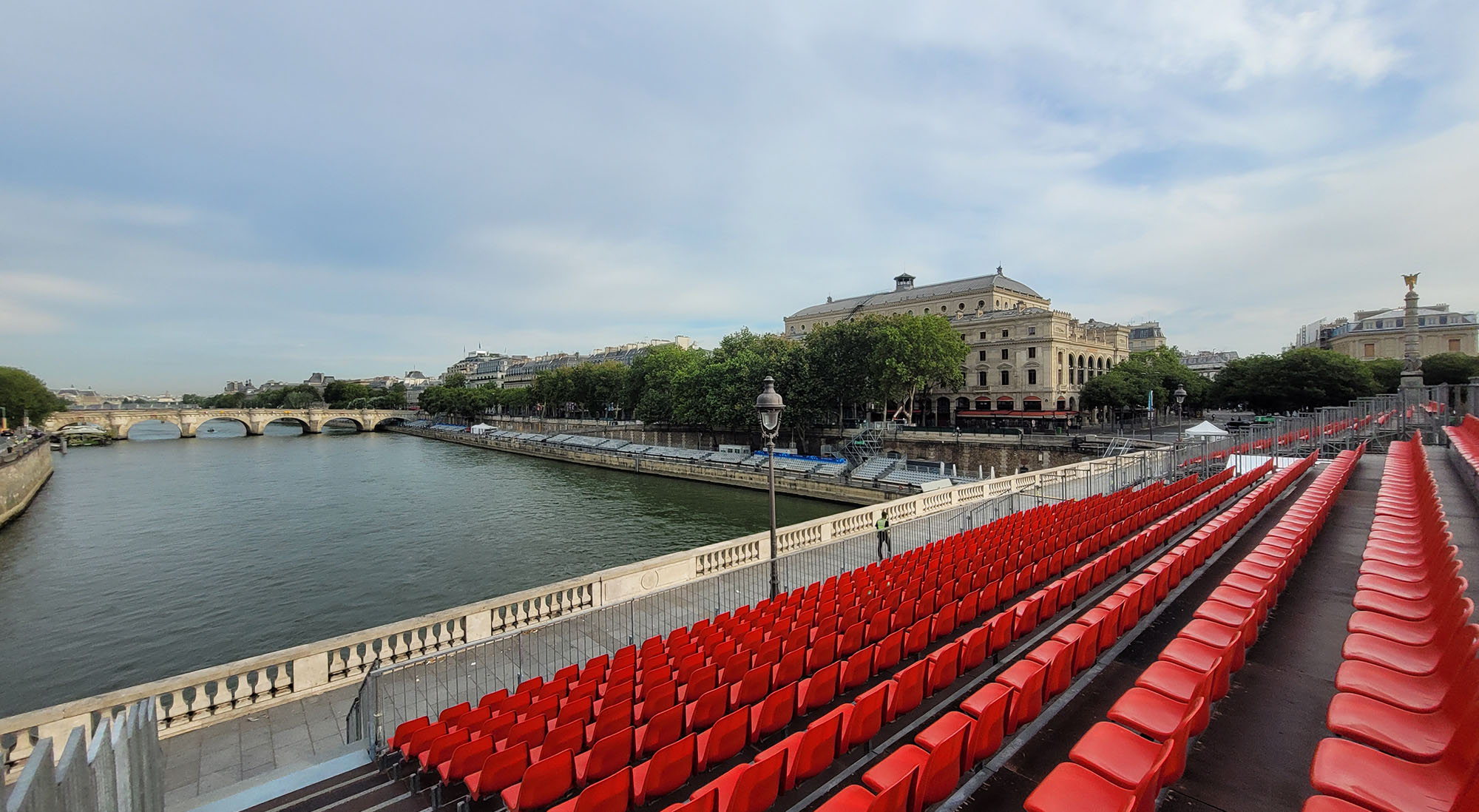
How to accomodate the public on the Pont au Change and the Pont de la Tournelle bridges, while ensuring the solidity of these structures dating from the 19th and 20th century buildings? Or along the Seine on the Quai du Gros Cailloux, near the Pont des Invalides on the left bank? How could the ornament indicating the starting point of the procession be placed on the stone parapet of the Pont d’Austerlitz? Or how to install Gojira on the façades of the Conciergerie’s corbelled platforms; the Garde Républicaine and Aya Nakamura on the Passerelle des Arts – without risking resonance with the crossing structure; a light show on the Debilly footbridge, which has little transverse rigidity? Or finally, the structural development of the dove-wing design, from the Pont Saint Louis to the Eiffel Tower?
Historical research was essential. The rediscovery of the Méry design (named after the engineer who developed it in the 19th century) enabled us to assess the stability of the masonry vault for the Pont de la Change. In fact, we had to determine the depth of the load-distributing embankments above the vault in order to test the sensitivity of the stone arches to the impact of point loads corresponding to the installation of steps. We delved back into history with the first rules for reinforced concrete to carry out the analysis of the Tournelle bridge, and we re-examined the old calculation codes for steel structures for the dynamic analysis of the Arts and Debily footbridges – these analyses were also backed up by full-scale tests on site.
The tests we carried out also included analysing the behaviour of the quays where the stands would be installed, on the banks of the Seine, in order to solidify our analysis and find the minimum distance for the installation of the stands, in the sector for which we were responsible. We positioned 80 tonnes, corresponding to the lower loads, and observed the settlement for 6 hours.
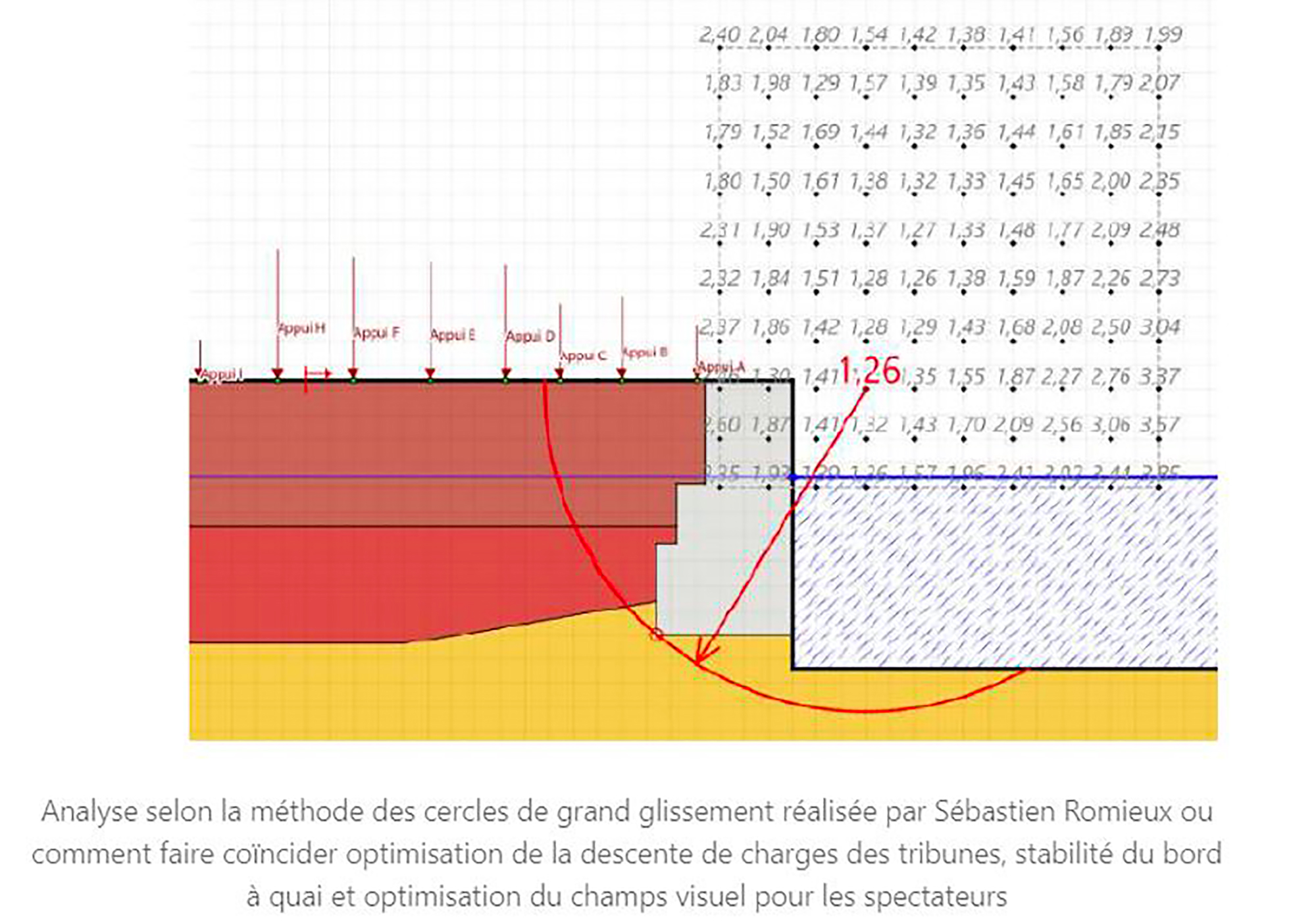
Thanks to the historical technical documentation provided by the École Nationale des Ponts et Chaussées (ENPC) and the Paris archives, we have been able to identify the type of stone and joints used in the Pont de Change, as well as the construction plans and photographs of the Pont de la Tournelle works.
Below: photo of the Pont de la Tournelle worksite. No reinforcement at the key. It is the compression force of the arch that cancels out the moment at the key ; this is an unpublished photo album not yet catalogued.
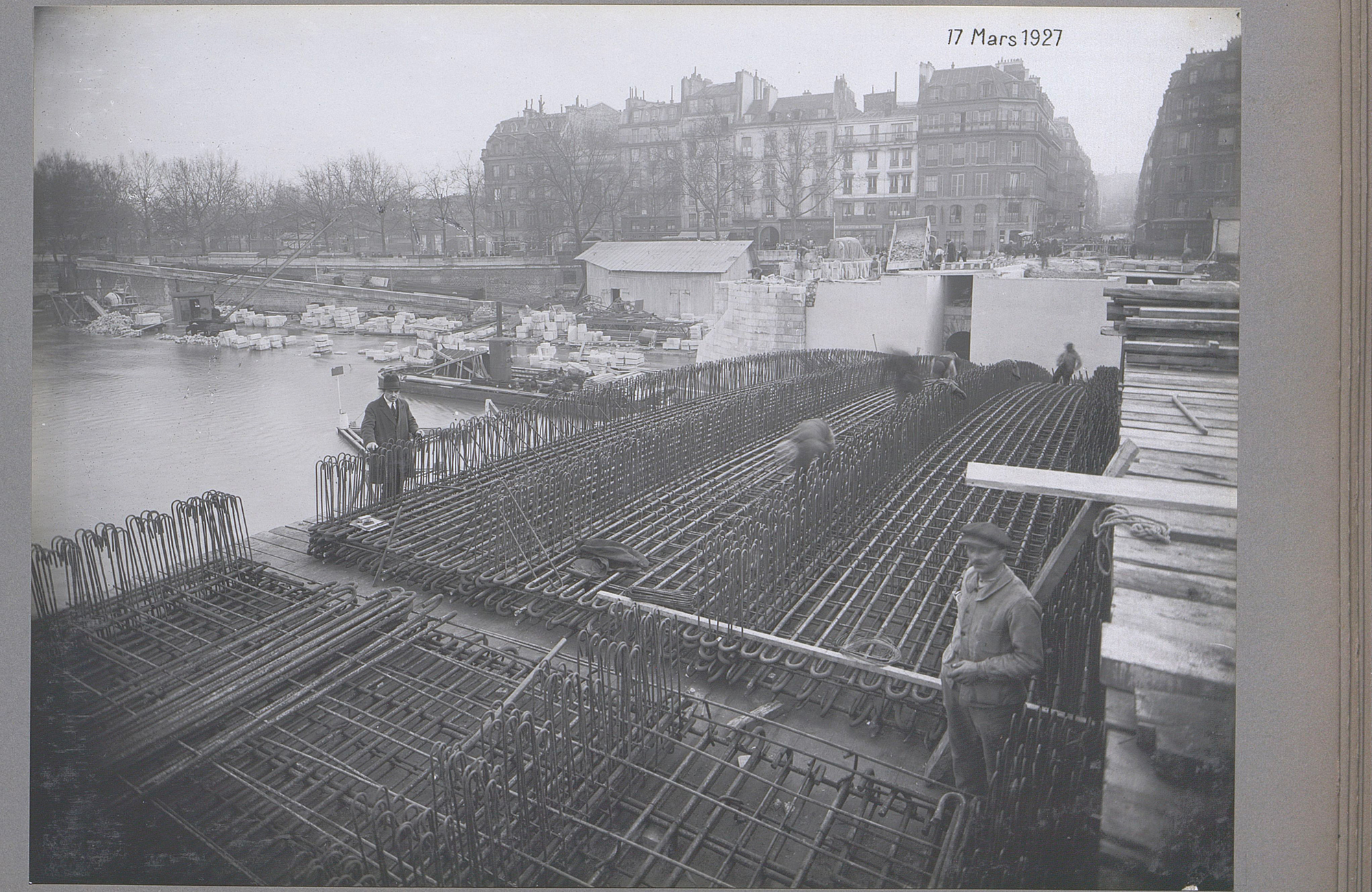
Three anecdotes that reveal the design and construction process in real time.
A few weeks before the opening ceremony, we had to recalculate the keystone of the concrete arch of the Pont de la Tournelle (built between 1924 and 1928). ENPC’s photographic heritage showed a lack of continuity of the reinforcement in the keystone of the concrete arch. The compression force in the arch that cancels out the moment at the key. Should we trust the compression force alone, confirmed by the theoretical calculations and the use of the structure? Spectators on the bridge blurs our ability to distance ourselves. A discussion with Victor Davidovici (Dynamique Concept) was essential. When we arrived on the bridge, while the stands were being installed, we couldn’t help but think about this.
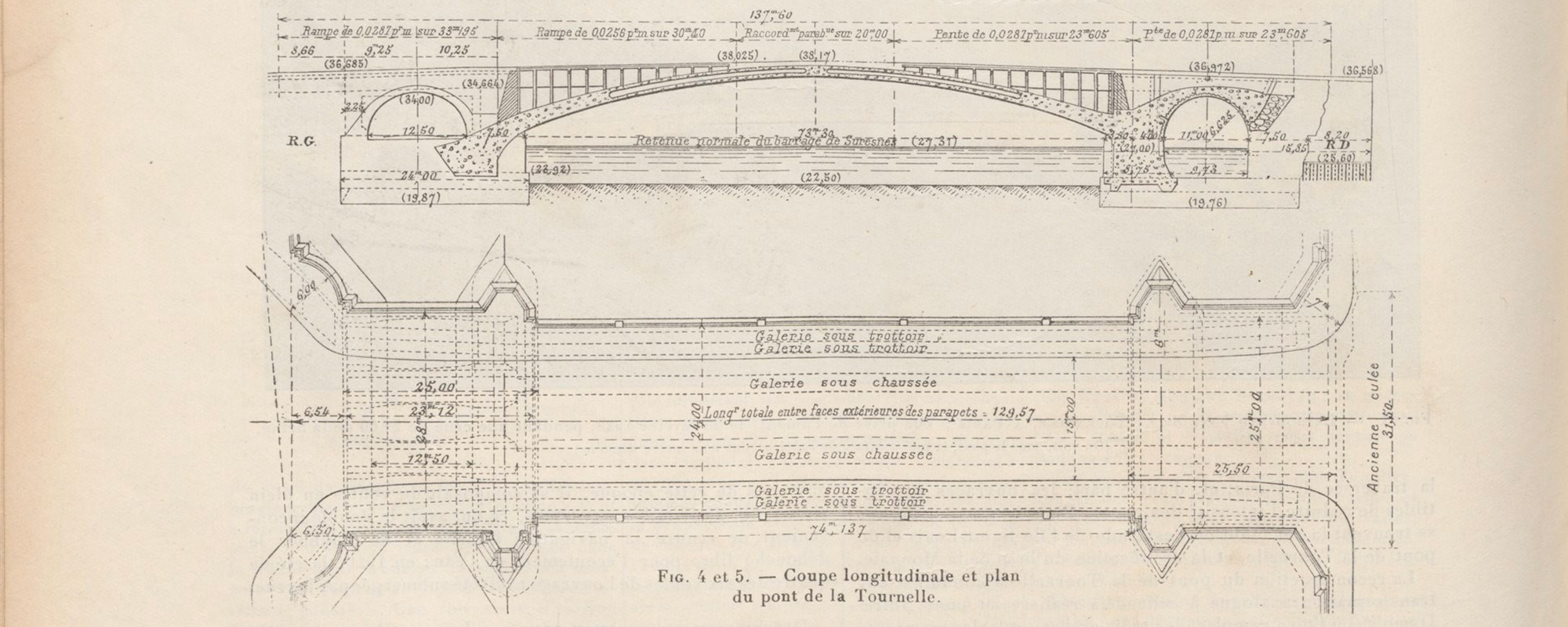
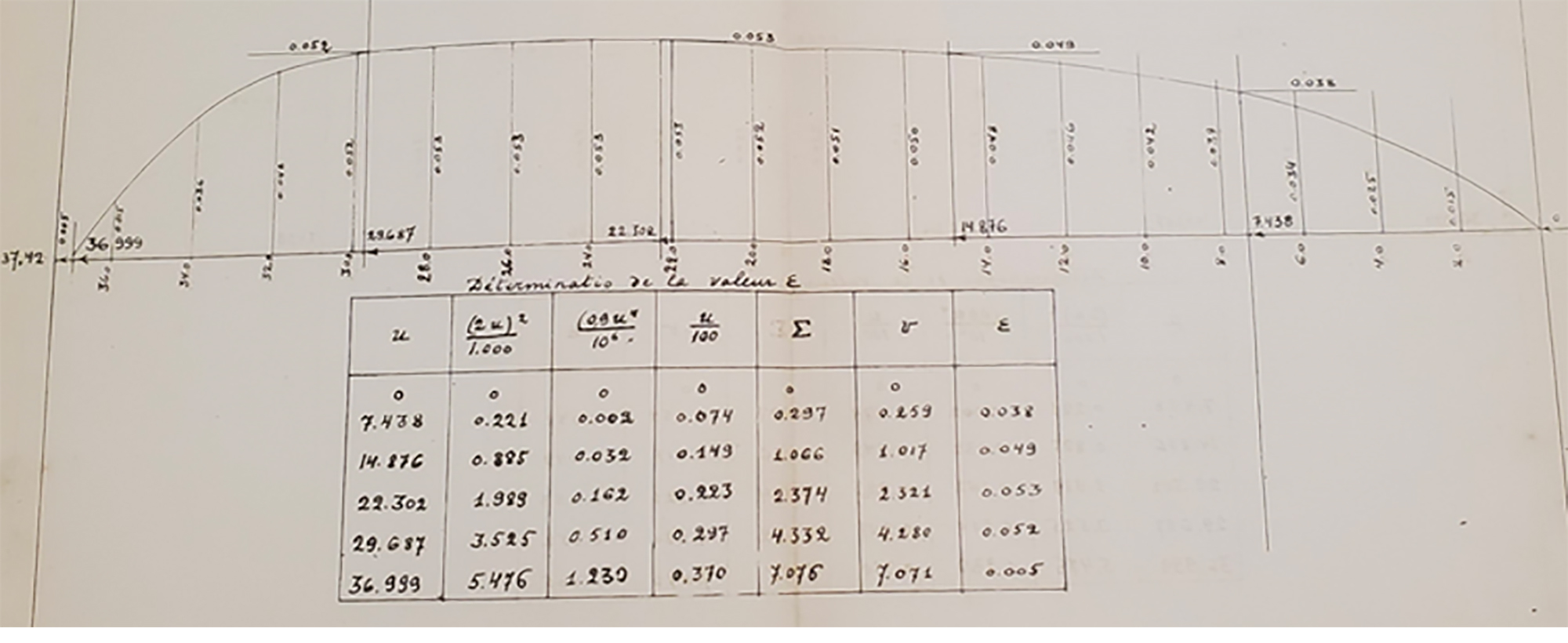
© Archives de la Ville de Paris
Three weeks before the ceremony, we got our hands on a legacy from the granddaughter of the engineer of the Pont de la Tournelle: watercolours from the construction file. Suddenly, a shadow lifted. The small span on the right bank of the Pont de la Tournelle was a concrete arch forming an abutment, and not the remains of the stone arch of the demolished bridge. This discovery, the result of Guillaume Saquet’s persistent research, is a precious find. It removes the uncertainty about the nature of the semicircular arch that prevented us from validating the layout of the steps on this part of the structure. These documents enabled us to carry out a calculation that had been blocked for many weeks.
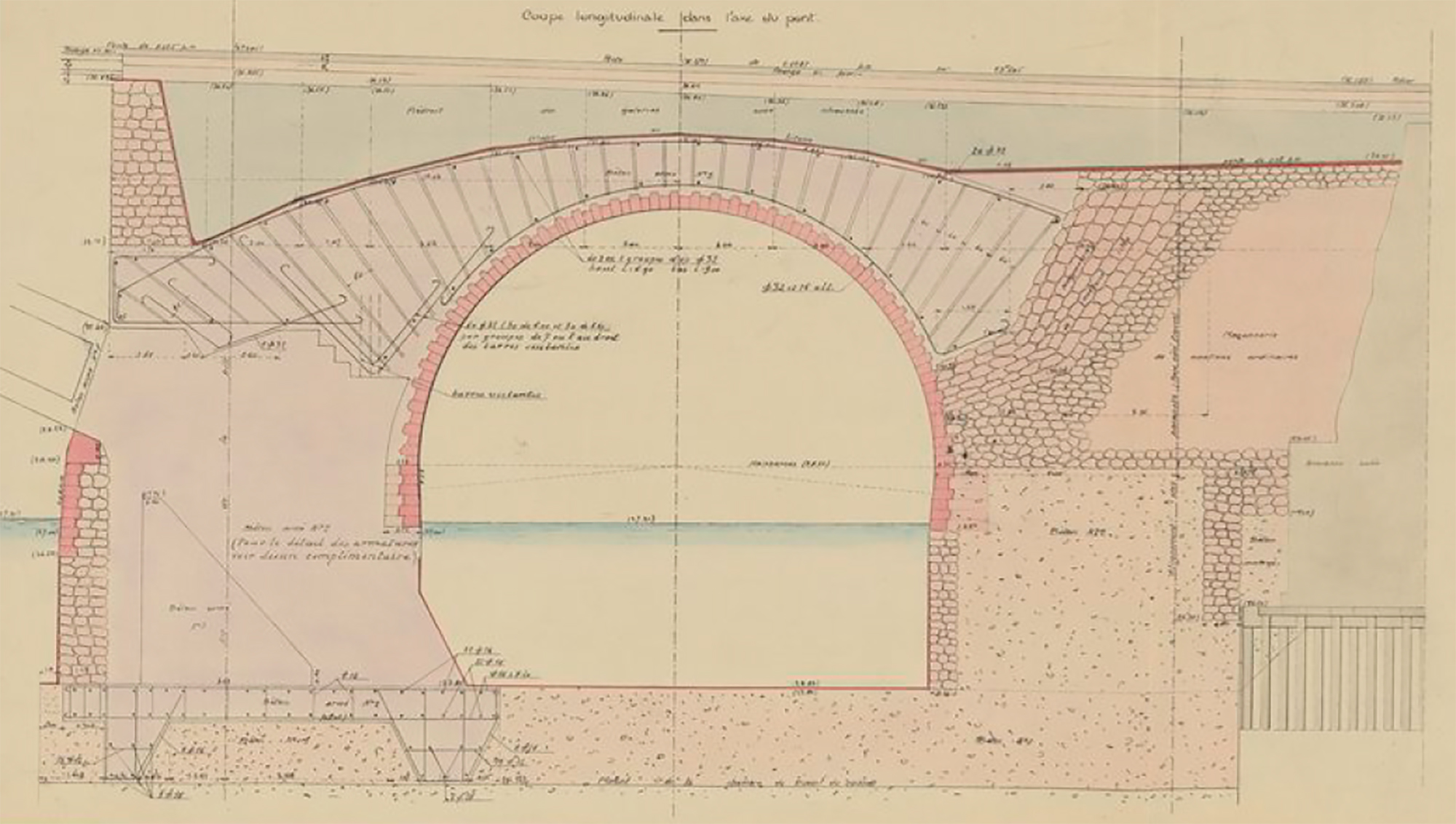
For the Pont au Change (rebuilt between 1858 and 1860 during the reign of Napoleon III), one uncertainty remained: the definition of the height of the embankments, an essential factor for the distribution of the point loads resulting from the impact of the scaffolding on the deck. This value was essential in order to guarantee the analysis, given the uncertainties regarding the geometry of the arch, the state of the joints and the nature of the stone (all this information was recorded in the nineteenth-century annals still available at the ENPC).
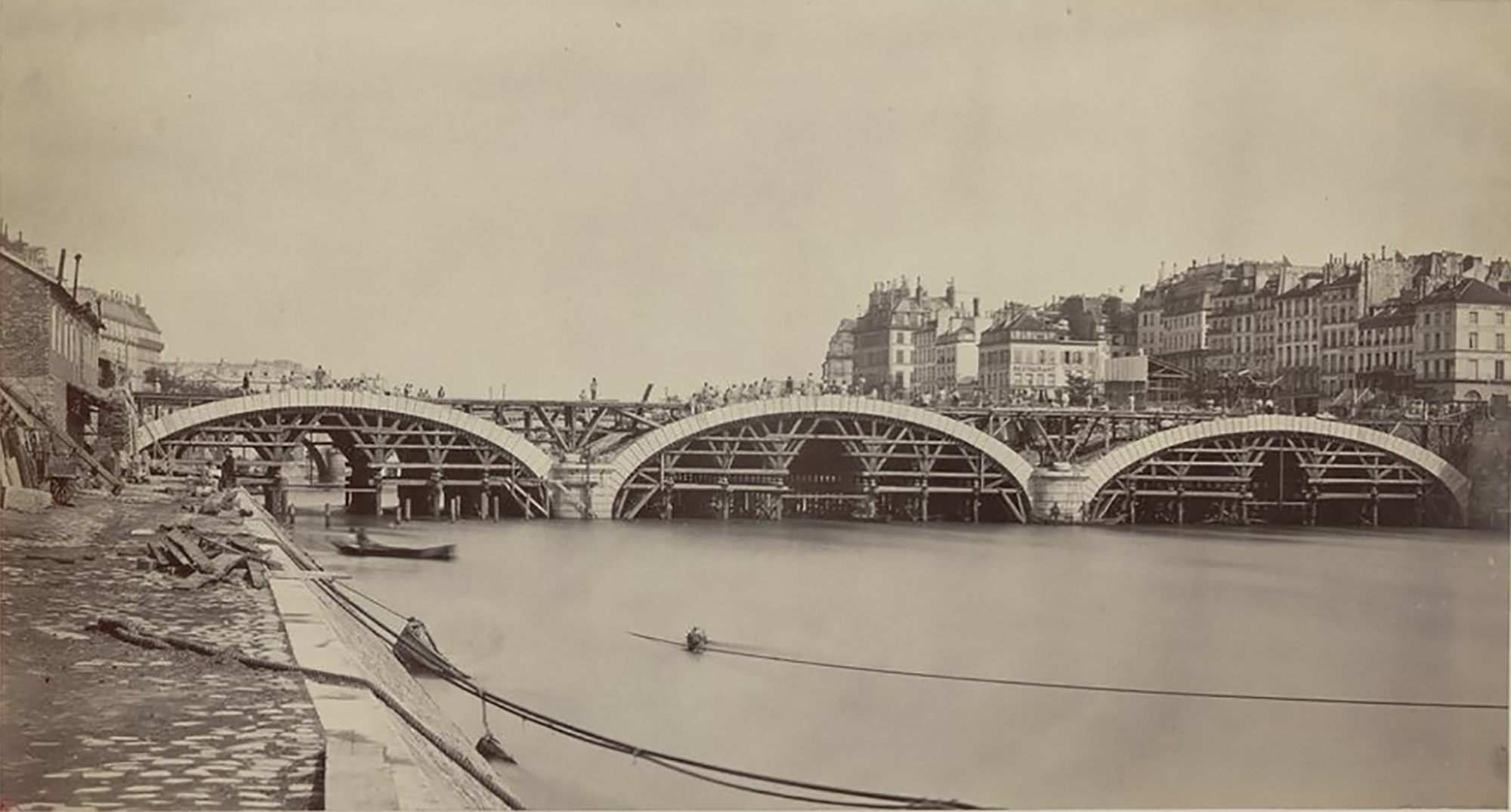
This was a key moment in the process. When the bleachers were erected, we decided to drill into the deck with a 20mm diameter rod, positioned between the paving stones so as not to disturb anything. This test confirmed the depth of the fill in the original plans, and subsequently validated the height of the wooden wedge under the stand legs, as well as our fracture analysis using the SETRA tool. Julien Jussaume (General Métal Edition) arrived on site to help us solve this problem. Drilling with such a small rod without breaking it… a real talent and an essential response.
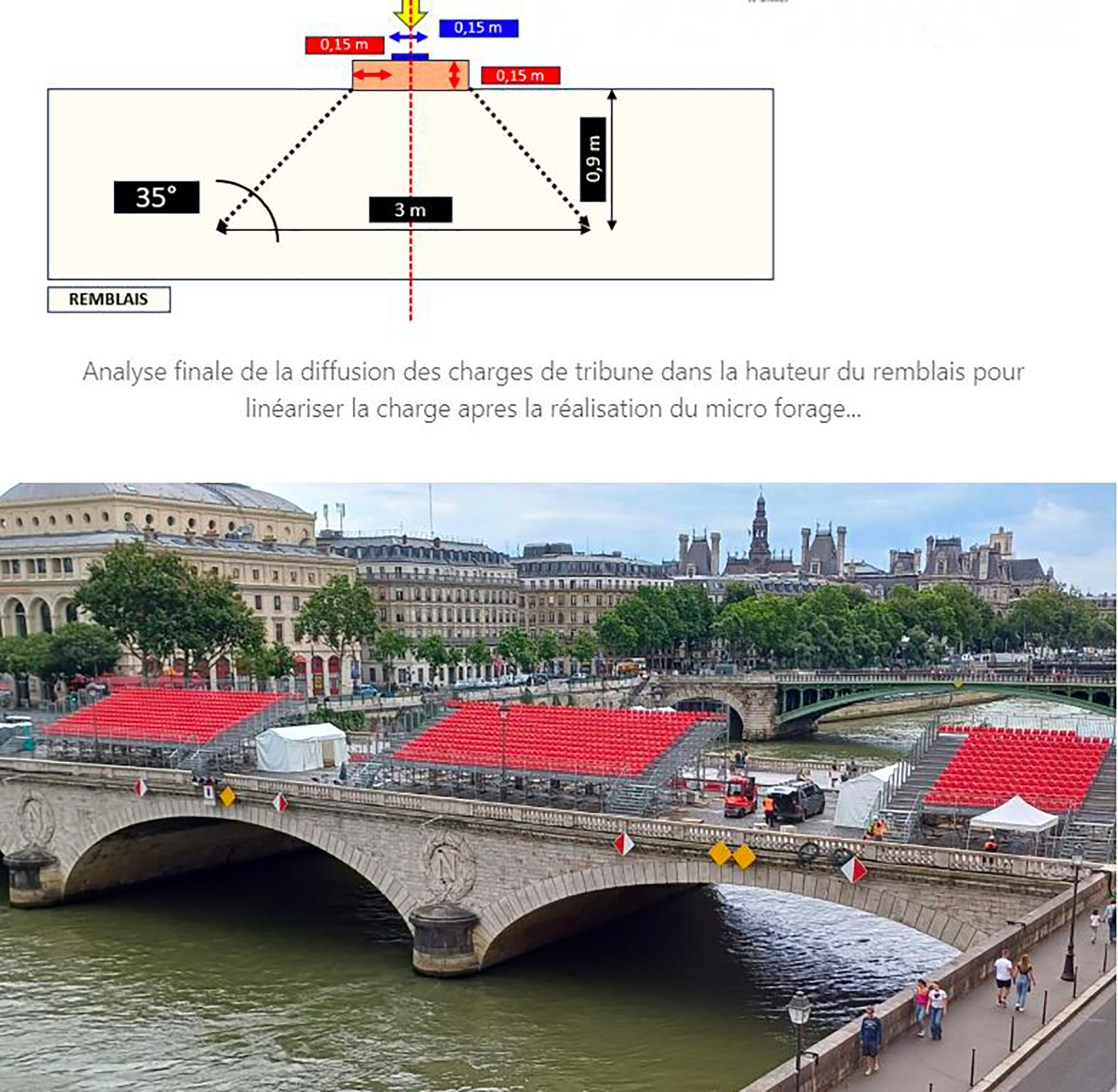
One question comes to mind: is it possible to work alone on such a broad and open subject?
The answer is no.
So I’d like to start by thanking the team at C&E ingénierie who were heavily involved in this project at different times depending on the subject and the demands (Vincent Barazzutti, Camille Dumetz, Andréa llorens Garcia, Lucie Hascoet, Jeanne le Jossec, Selima Maamouri, Sarah Robinet and Yanni Zhao). And also the teams at Paname 24, whose professionalism and kindness enabled us to think relatively calmly in an extraordinary context.
The operation’s control offices, Remi Van Greveline and Anh Dung Nguyen for Veritas and Emmanuel Granier for ICE, were essential partners in pushing forward our thinking and analysis. Sébastien Romieux, Geotechnical Technical Manager at Vertical SEA, who carried out a remarkable analysis of the support structures on the Gros Cailloux Rive Gauche quay based on partial information, and Victor Davidovici from Dynamique Concept, who put my mind at rest when we were wondering about the results of our analyses of the behaviour of the concrete structure of the Tournelle bridge, Julien Tanant, an engineer at Setec, who provided us with the Voute software written by Setra in 1982, an essential tool for consolidating our analysis of the bridge at Le Change.
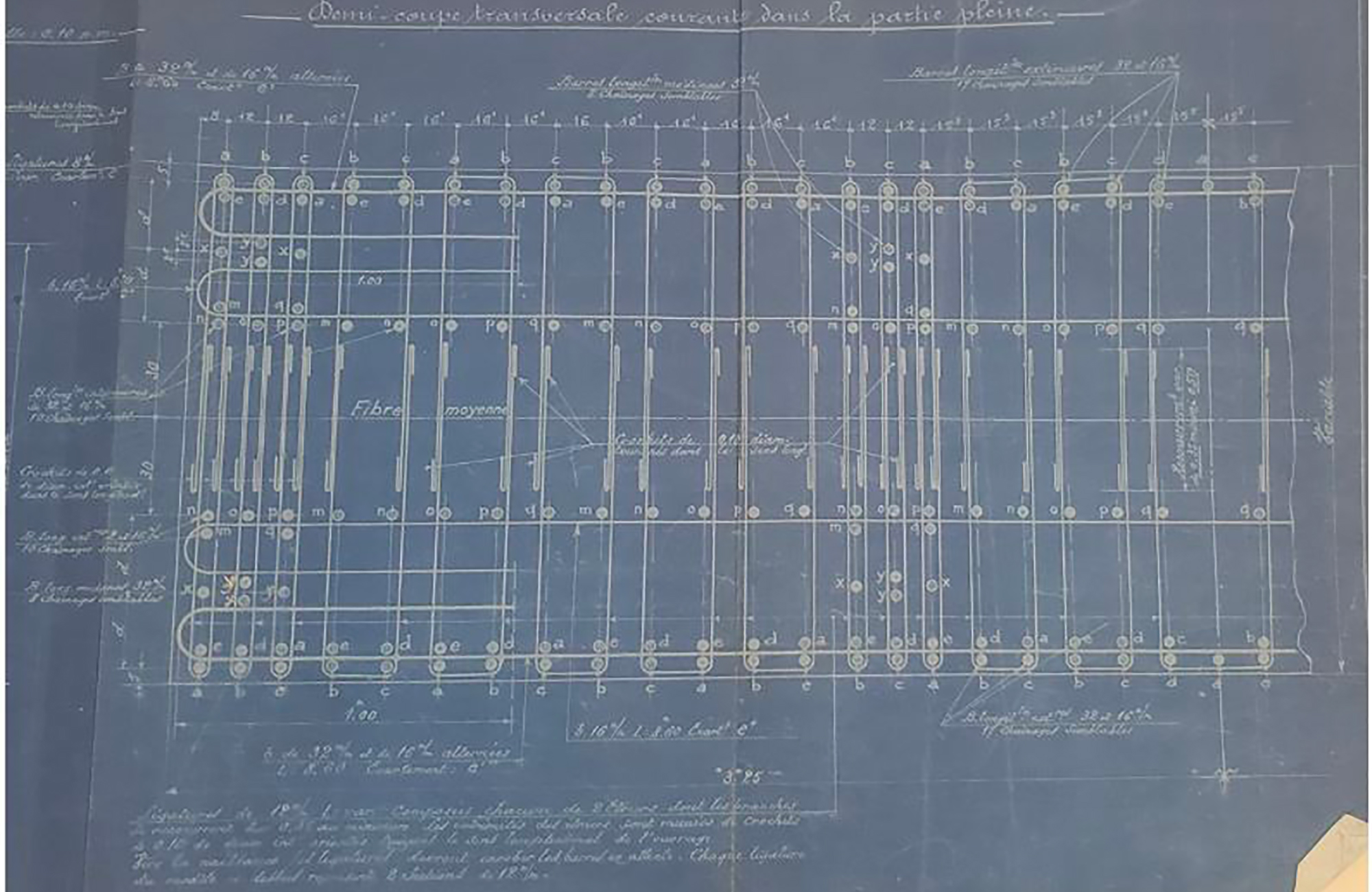
© Archives de la Ville de Paris
And of course Guillaume Saquet, deputy head of the Heritage and Archives Department at the ENPC, who compiled an extraordinary documentary database for us, enabling us to carry out our analysis in remarkable depth.
Or Julien Jussaume, manager of General Métal Edition, who came to help us analyse the depth of the embankments above the arches of the Pont au Change.
In just a few days, Infraneo programmed a campaign of investigations along the quayside of the Grand Cailloux sector on the left bank to understand the anchoring of the supports, and GERB France, with whom we carried out resonance tests on the Debilly footbridge to calibrate the artistic show.
You can’t do anything on your own.
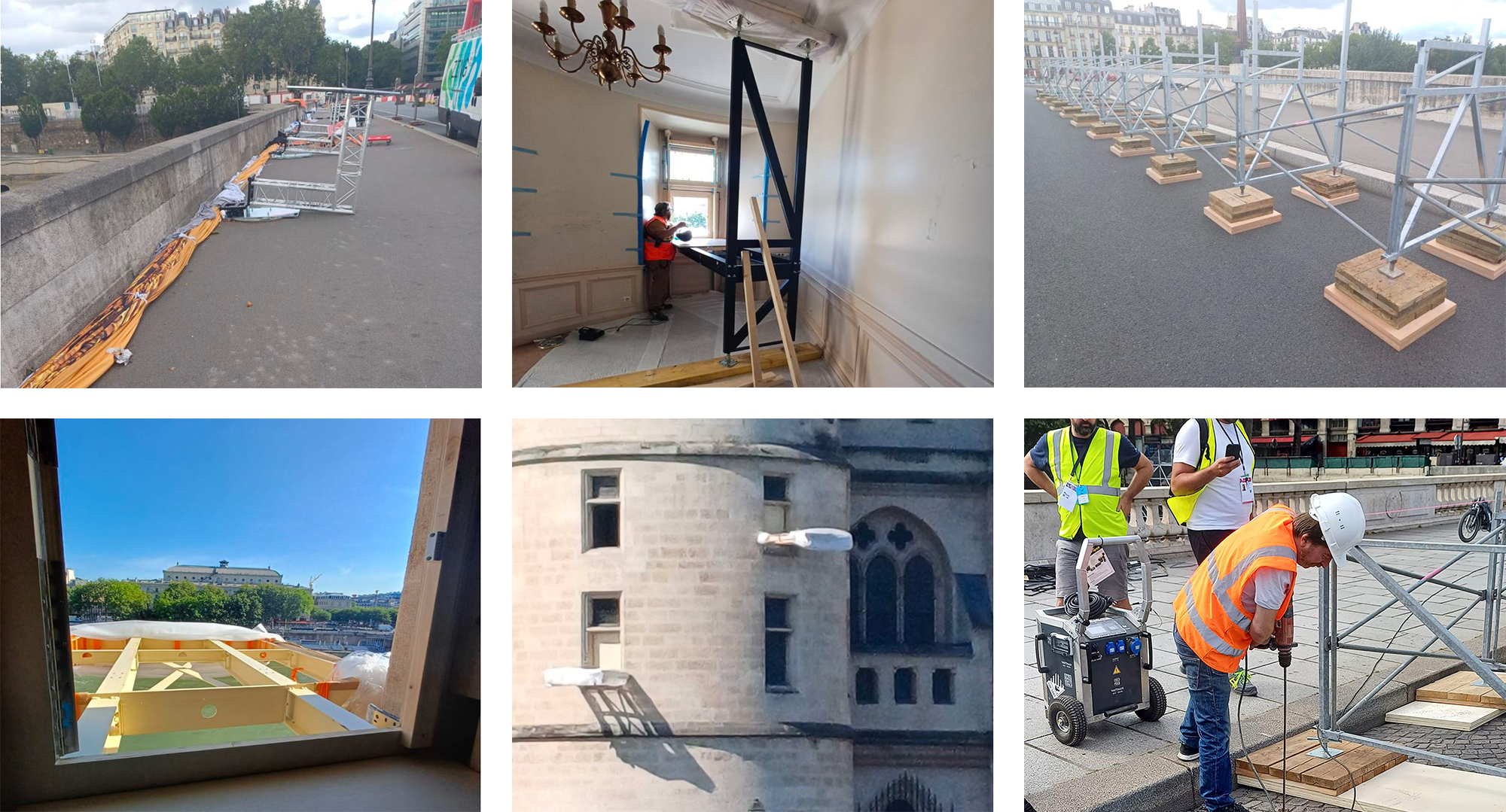
In this world of live performance that the architect Martin Veith (Atelier de l’Echiquier) introduced me to thirty years ago and in which the former chief engineer of Veritas, Christian Lapeyre, trained me, a successful technical job is one that knows how to step back to make room for artistic expression.
So we all stepped back on the evening of 26 July to become amazed (albeit stressed) spectators once again, like so many others.
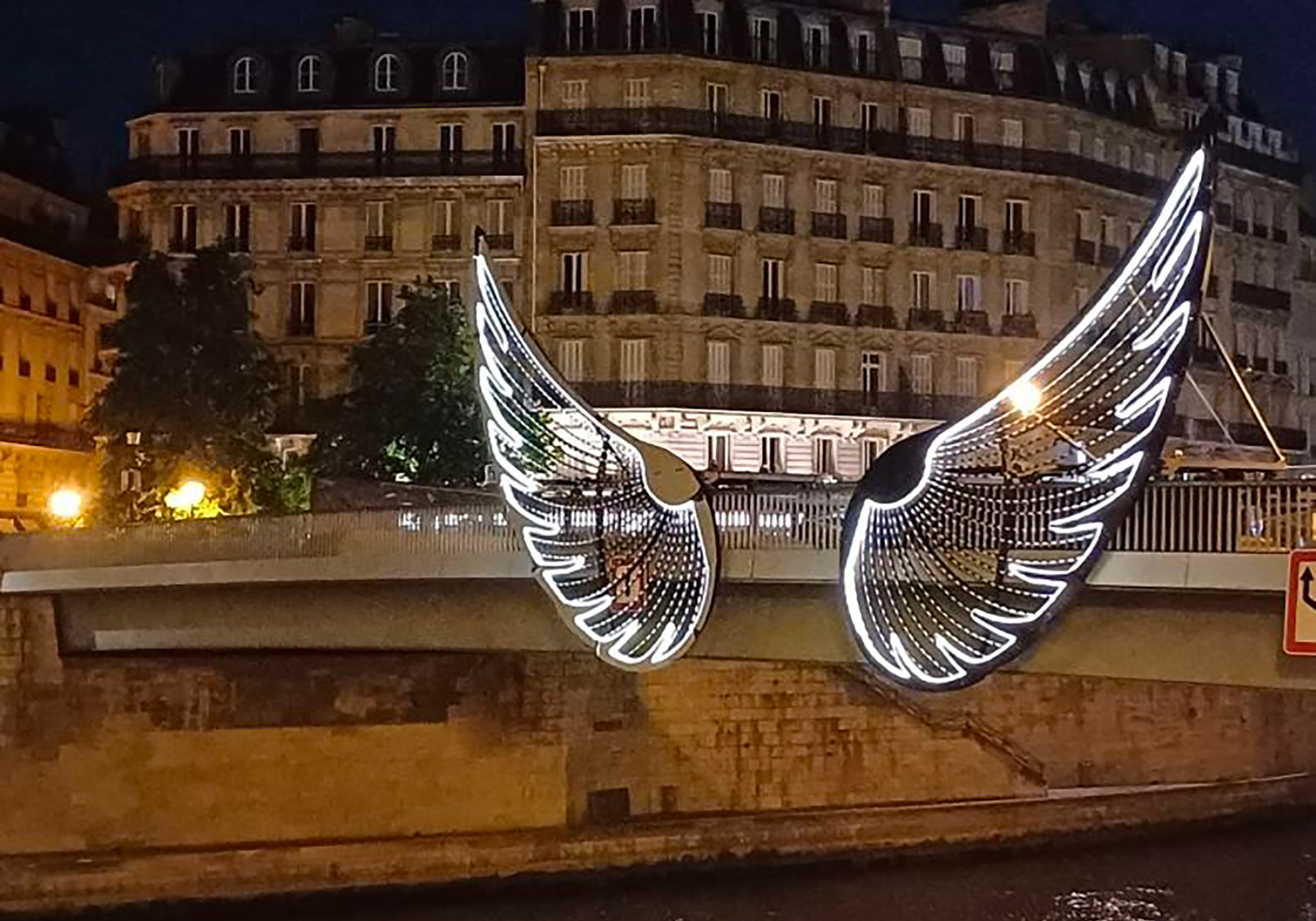
The opening ceremony of the 2024 Olympic Games, a unique structural engineering experience
Project: Structures for the opening ceremony of the 2024 Olympics, along the River Seine
Completion: End of July 2024
Executive production: Paname 24
Project control offices: Veritas (Remi Van Greveline and Anh Dung Nguyen) and ICE (Emmanuel Granier)
C&E ingénierie: Vincent Barazutti, Camille Dumetz, Andréa llorens Garcia, Lucie Hascoet, Jeanne le Jossec, Selima Maamouri, Sarah Robinet, Jean-Marc Weill and Yanni Zhao
Engineering firms and associated companies: Vertical SEA (Sébastien Romieux), Dynamique Concept (Victor Davidovici), Setec (Julien Tanant), General Metal Edition (Julien Jussaume), Infraneo, GERB,
Deputy Head of the Heritage and Archives Department at the École Nationale des Ponts et Chaussées: Guillaume Saquet

